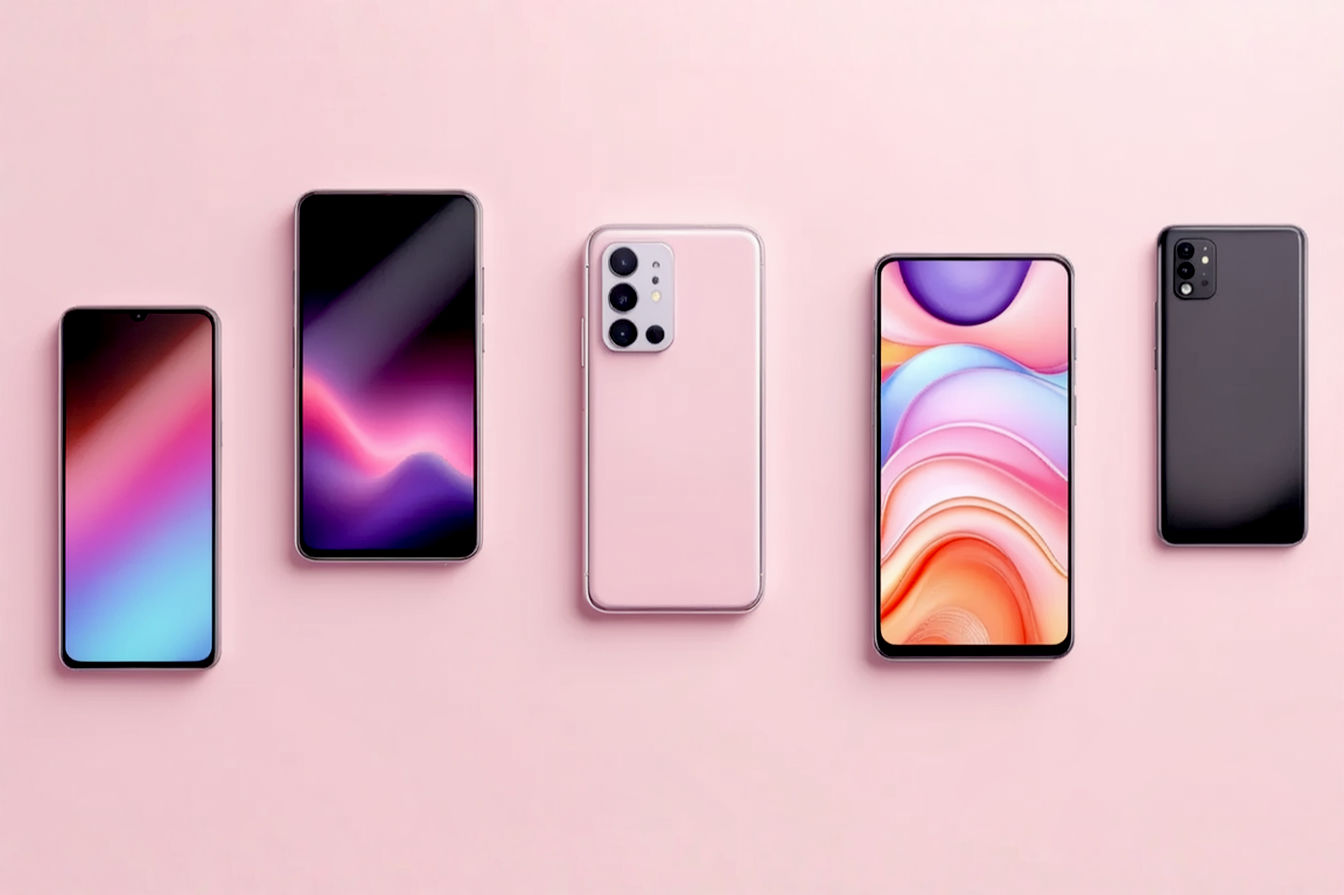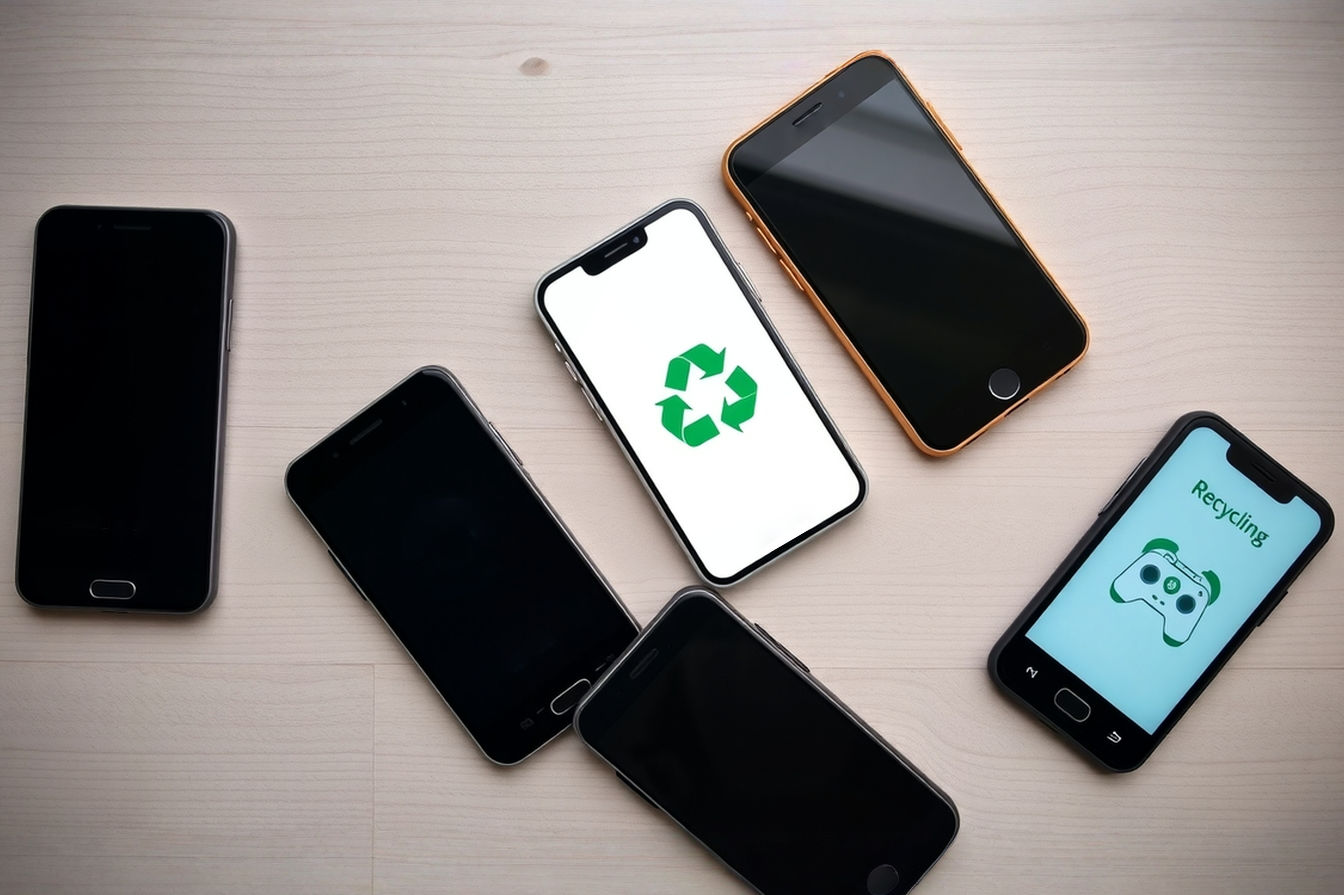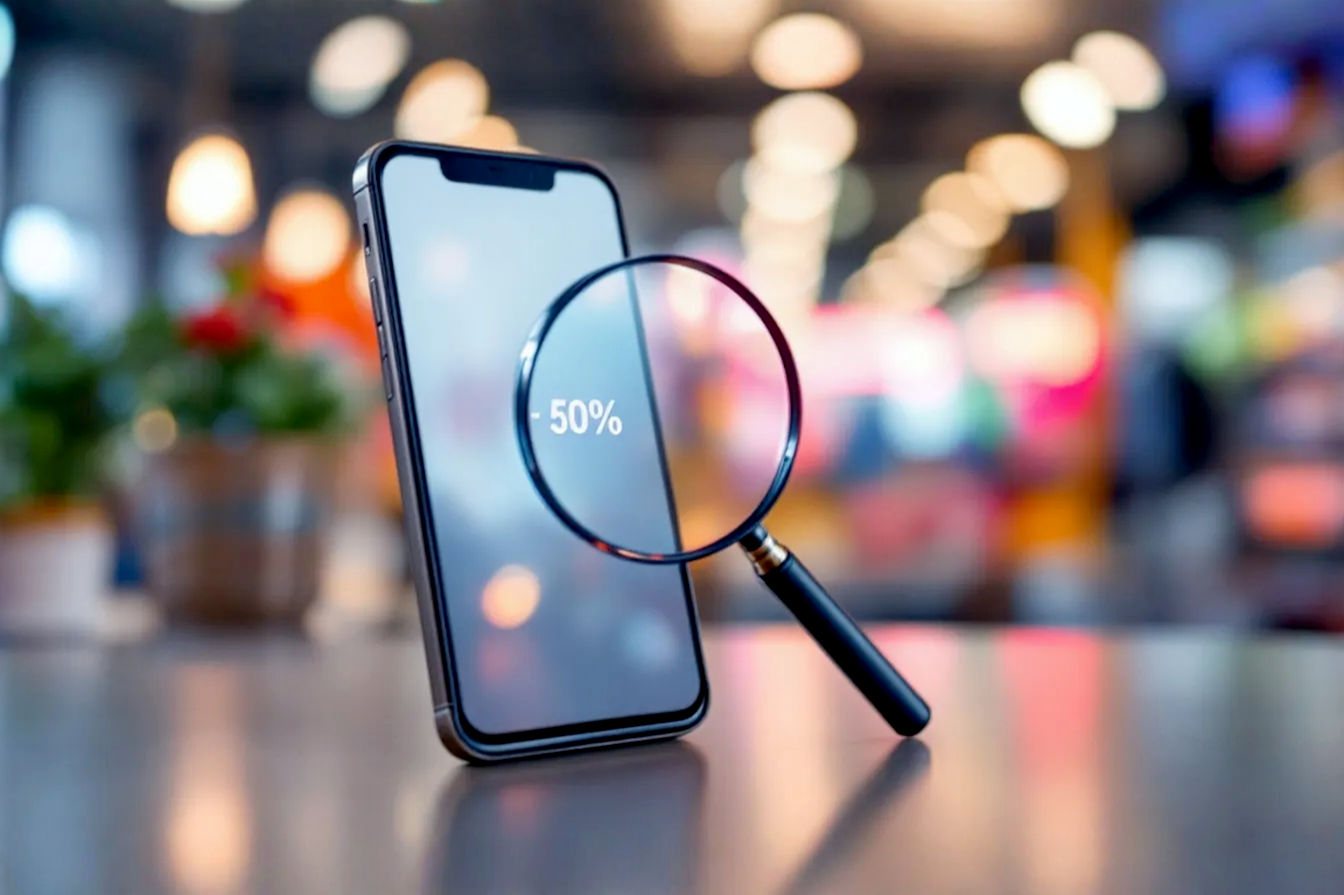This post may contain affiliate links. If you make a purchase through these links, we may earn a commission at no additional cost to you.
Getting a new cell phone can feel expensive, right? Especially the latest models with all the bells and whistles. It seems like you either pay hundreds of dollars upfront or commit to a pricey monthly installment plan for years. But what if you could get a new phone without paying for it directly? That’s where “free” phone deals bundled with cell phone plans come in. They sound amazing, but like most things that seem too good to be true, there’s usually a catch or two. This guide will walk you through how these offers work, what to look out for, and how to find a genuinely good deal that includes a handset without breaking the bank on your monthly bill.
How Do “Free” Phones Actually Work?
When a cell phone carrier or provider advertises a “free” phone, they aren’t typically just handing you a brand-new device with no strings attached. That wouldn’t make much business sense for them! Instead, the cost of the phone is almost always recovered through the monthly plan you agree to, usually over a set period, often 24 or 36 months. The “free” part comes in how they structure the payments or credits.
The most common way carriers offer a “free” phone is through bill credits. Here’s the basic idea: you agree to a specific cell phone plan for a fixed term (say, 36 months). The carrier then applies a credit to your monthly bill that matches the monthly installment cost of the phone. So, if the phone costs $720 retail, and you’re on a 36-month agreement, the phone’s cost is $20 per month. The carrier gives you a $20 credit each month. Your bill shows the full plan cost plus the $20 phone installment, but then the $20 credit is applied, making it look like you aren’t paying for the phone.
The Mechanics of Bill Credits
Let’s break down bill credits a bit more technically. When you sign up for a “free” phone deal based on bill credits, you are essentially entering into two agreements simultaneously: a service agreement for your monthly plan and an equipment installment plan (EIP) for the phone.
The equipment installment plan (EIP) is a financing agreement for the full retail price of the phone. For example, if the phone is $720, your EIP might be $20 per month for 36 months. This is a legally binding loan for the phone’s cost.
The service agreement is for your talk, text, and data plan. This is where the carrier applies the promotional bill credit. The credit is tied to you staying on the specific plan for the full duration of the EIP, which is typically 24 or 36 months. Each month, the carrier credits your account the amount equal to the phone’s monthly installment.
The crucial technical detail here is that the bill credit stops if you leave the carrier or change to an ineligible plan before the installment term is up. If you leave after 18 months of a 36-month agreement, you’ve only received 18 months of credits. The remaining balance on the EIP (18 months * $20 = $360 in our example) becomes immediately due. This is how carriers ensure you stay with them for the full term, recouping the phone’s cost through your continued service payments. The credit isn’t a discount on the phone itself; it’s a conditional credit on your service bill.
Trade-In Promotions
Another popular method for getting a “free” phone is through trade-in promotions. In these deals, you trade in your old phone, and the carrier gives you a credit towards a new one. Often, with a valuable enough trade-in (like a recent flagship phone in good condition), the trade-in value plus promotional credits can cover the entire cost of a new, less expensive or even a mid-range phone, making it effectively “free.” For high-end new releases, a top-tier trade-in might significantly reduce the cost, sometimes making it feel free even if you still pay a small amount monthly.
Trade-in promotions also typically involve bill credits spread over 24 or 36 months. The value of your trade-in might be applied as an initial lump-sum credit, or it might be factored into the total promotional credit spread over the installment plan. Like the standard bill credit deals, leaving the carrier early usually means you forfeit the remaining promotional credits.
The technical process for trade-ins involves an assessment of your old device’s condition and model to determine its market value. This value, combined with the carrier’s specific promotional offer for that device and the new phone you’re selecting, determines the total credit amount. This credit is then applied via monthly bill credits over the EIP term, locking you into the service agreement.
Major Carriers vs. MVNOs: Different Approaches
The type of provider you choose can significantly impact the kind of “free” phone deals you’ll find. Generally, the US market is dominated by three major carriers: Verizon, AT&T, and T-Mobile. Alongside them are numerous Mobile Virtual Network Operators (MVNOs).
Major Carrier Offers
Major carriers are known for offering the latest and most expensive flagship phones as part of their “free” phone promotions. You’ll often see deals advertising the newest iPhone or Samsung Galaxy device. These offers usually require you to sign up for their more premium, unlimited data plans. This makes sense for the carriers; they can afford to subsidize expensive phones because they are locking customers into higher-revenue plans for an extended period (typically 36 months).
The technical infrastructure of major carriers involves owning and operating their own extensive network towers and spectrum licenses (the radio frequencies used for mobile communication). This massive investment allows them to offer nationwide coverage and high-speed data, which justifies the higher cost of their plans. Their “free” phone offers are a marketing tool to attract and retain customers on these valuable network assets. They leverage the appeal of a new, high-end device to get users to commit to a long-term, higher-priced service contract.
While major carriers offer attractive phone options, their associated plans are often more expensive than MVNOs, even with the “free” phone factored in. You need to calculate the total cost over the contract term to see if the “free” phone is truly saving you money compared to buying a phone outright and choosing a cheaper plan.
MVNO Offers
Mobile Virtual Network Operators (MVNOs) operate differently. They don’t own their network infrastructure. Instead, they lease network capacity from the major carriers at wholesale rates and resell it to consumers under their own brand. Examples include Mint Mobile, Visible, Cricket Wireless, and many others.
MVNOs typically focus on offering lower-cost plans. Their “free” phone offers are often less about the absolute latest flagship and more about providing budget-friendly or mid-range smartphones. Sometimes, they might offer older flagship models or phones from less premium brands as part of a promotion. Their deals might involve an upfront rebate, a shorter-term bill credit, or require porting your existing number from another carrier.
Technically, MVNOs function as a layer on top of the underlying major carrier network (e.g., Visible runs on Verizon’s network, Mint Mobile on T-Mobile’s). Their business model relies on lower overhead costs (no network to maintain) to offer cheaper plans. Their phone promotions are designed to attract cost-conscious customers who are looking for a complete package (phone + service) at a lower overall price point than the major carriers. The phones offered might not be the absolute newest or most powerful, but they are functional smartphones suitable for everyday use.
Comparing MVNO “free” phone deals requires looking closely at the specific phone model offered, the required plan features, and the total cost over the promotional period. While the monthly plan cost is usually lower than major carriers, the phone itself might be less valuable or require a different type of commitment.
Understanding the Fine Print: The Catches
The term “free” is a powerful marketing word, but it’s crucial to understand the conditions attached. These aren’t gifts; they are incentives tied to long-term financial commitments. Ignoring the fine print can lead to unexpected costs or limitations.
Long-Term Contracts (Disguised)
As mentioned, the most significant “catch” is the long-term commitment, typically 24 or 36 months. While traditional two-year contracts for service largely disappeared years ago, “free” phone deals through installment plans and bill credits effectively bring back a similar lock-in. You are tied to the carrier and the specific plan for the duration it takes to receive all the credits that make the phone “free.”
The technical term for this is often an Equipment Installment Plan (EIP) combined with a service agreement promotional credit addendum. The EIP is a financing agreement for the phone’s full cost. The addendum specifies that you receive monthly credits only if you maintain service on a qualifying plan for the entire EIP duration. If you terminate service or downgrade your plan, the remaining balance on the EIP becomes due, and the future credits are forfeited. This structure ensures the carrier recovers the phone’s cost through your consistent, long-term plan payments.
Required Expensive Plans
Many “free” phone offers, especially for high-end devices from major carriers, require you to subscribe to their more expensive, premium unlimited data plans. While you might have wanted an unlimited plan anyway, these required plans often come with features you might not need (like extra hotspot data, international roaming benefits, or streaming service bundles) that add to the monthly cost.
The technical reason for this requirement is directly tied to the carrier’s profitability model. By tying the “free” phone to a higher-ARPU (Average Revenue Per User) plan, the carrier ensures they generate enough revenue from your service over the 24 or 36 months to offset the cost of the phone subsidy and still make a profit. The perceived value of the “free” phone encourages customers to accept a higher monthly service fee than they might otherwise choose.
Activation Fees and Taxes
Even if the phone itself is “free” through credits, you will almost certainly have to pay activation fees and sales tax on the phone’s full retail price upfront. These are standard costs associated with activating new service and purchasing goods. While not a catch in the sense of hidden fees, they are out-of-pocket expenses you should factor into the total cost of getting the new phone and plan.
The technical explanation is simple: activation fees cover the carrier’s administrative costs of setting up a new line of service and device on their network. Sales tax is a government-imposed tax on the retail value of the goods being purchased (the phone), regardless of how it’s being financed or credited by the carrier. These are separate from the monthly service or equipment costs.
Phone Locking
Phones obtained through carrier “free” phone deals are typically carrier-locked. This means the phone is programmed to only work on that specific carrier’s network. You cannot simply pop in a SIM card from another carrier and expect it to function.
Carrier locking is a technical measure implemented by the carrier using software on the phone. It checks the SIM card’s network identifier (MCC/MNC codes) against a list of allowed networks. If the SIM belongs to a different carrier, the phone will not connect to the network. This is another way carriers enforce the long-term commitment associated with the “free” phone deal. They want to prevent you from taking the subsidized phone and immediately switching to a competitor.
Carriers usually have a policy for unlocking phones, but it typically requires the phone to be fully paid off (meaning you’ve completed the 24 or 36-month installment plan and received all credits) and that your account is in good standing. The technical process for unlocking usually involves the carrier sending an unlock code or remotely pushing an unlock command to the device after verifying eligibility.
Comparing Deals Beyond the “Free” Label
Simply seeing “Free Phone” isn’t enough to know if it’s a good deal for you. You need to look beyond that headline and compare the total cost and value proposition.
Total Cost Over Contract
The most critical factor is the total cost you will pay over the entire contract duration. Don’t just look at the monthly plan price advertised alongside the “free” phone. Multiply the monthly cost by the number of months in the agreement (24 or 36). Add any upfront costs like activation fees or sales tax. This gives you the true cost of the deal.
For example, a “free” phone deal might require a $70/month plan for 36 months. The total cost is $70 * 36 = $2520, plus taxes and fees. Compare this to buying the phone outright (say, $720) and getting a cheaper $30/month SIM-only plan for 36 months ($30 * 36 = $1080). The total cost in the second scenario is $720 + $1080 = $1800. In this hypothetical, the “free” phone deal actually costs $720 more over three years.
This calculation highlights that the “free” phone is subsidized by the higher cost of the required monthly service plan over the long term. The carrier is essentially bundling the phone’s cost into your monthly bill.
Plan Features and Network Coverage
Beyond the cost, make sure the required plan actually meets your needs. Does it have enough data? Is the network coverage strong in the areas you frequent? A “free” phone isn’t worth it if you can’t reliably use your service.
Technical aspects of plan features include data allowances (e.g., 10GB, unlimited), data prioritization (premium data vs. deprioritized data during network congestion), hotspot allowances, and international features. Network coverage depends on the carrier’s infrastructure (cell tower locations, spectrum holdings) in your specific geographic area. You can usually check coverage maps on the carrier’s website, but these are often optimistic. Checking with friends, family, or online forums about real-world coverage in your area is often more reliable.
Phone Model and Value
Consider the specific phone model being offered. Is it a phone you actually want and that will meet your needs for the next two or three years? A “free” older or less powerful phone might not be a good value if you’ll need to replace it before the contract is up.
The technical specifications of the phone (processor, RAM, camera quality, battery life, storage) determine its performance and longevity. Research the phone model independently to ensure it’s a capable device that will receive software updates for a reasonable period. Don’t just accept a “free” phone because of the price tag; make sure it’s a phone you’ll be happy using for the entire commitment period.
Types of “Free” Phone Offers in More Detail
Let’s dive a little deeper into the two primary mechanisms: bill credits and trade-in promotions.
Bill Credit Promotions
These are the most straightforward “free” phone deals. The carrier offers a specific phone model at its full retail price but provides a monthly bill credit equal to the phone’s monthly installment cost.
Simplified Explanation: The phone costs $20/month on a payment plan. The carrier gives you a $20 discount on your bill every month. Result: you pay $0 extra for the phone monthly, as long as you stay.
Detailed Technical Explanation: When you agree to a bill credit promotion, you enter an Equipment Installment Plan (EIP) for the full retail price of the phone, typically amortized over 24 or 36 months. Simultaneously, the carrier applies a recurring promotional service credit to your account. This credit is contingent upon maintaining active service on a specific, eligible rate plan for the entire duration of the EIP. The credit amount is calculated to offset the monthly EIP charge, effectively reducing your net monthly phone cost to zero. However, this promotional credit is separate from the EIP obligation. If the service agreement is terminated (e.g., by switching carriers, canceling the line, or sometimes even changing to an ineligible plan) before the EIP is fully paid off through credits, the remaining balance on the EIP becomes immediately due. The conditional promotional credits cease, and you are liable for the full remaining retail cost of the device. This structure is a powerful customer retention mechanism.
Trade-In Promotions Explained
Trade-in offers involve giving your old phone to the carrier in exchange for credit towards a new device. These are often combined with bill credits to reach the “free” threshold, especially for high-value new phones.
Simplified Explanation: Give us your old phone, and we’ll give you a big discount on a new one. We’ll spread that discount out over your monthly bills. If your old phone is valuable enough and you pick the right new phone, the discount covers the whole cost.
Detailed Technical Explanation: A trade-in promotion involves the carrier assessing the market value of your submitted device based on its model, condition, and storage capacity. This assessed value is then combined with a promotional trade-in bonus credit offered by the carrier. The total credit amount (assessed value + promotional bonus) is typically applied to your account via monthly bill credits spread over a 24 or 36-month Equipment Installment Plan for the new device. For instance, if your trade-in is valued at $200 and the carrier offers a $500 promotional bonus for trading it towards a $700 phone, the total credit is $700. This $700 credit is then divided by the EIP term (e.g., 36 months), resulting in a monthly credit amount that offsets the new phone’s installment. Similar to standard bill credit deals, these credits are conditional on maintaining service for the full term. Early termination results in forfeiture of remaining promotional credits, and the outstanding EIP balance becomes due. The trade-in device itself is either refurbished and resold or responsibly recycled, allowing the carrier to recoup some value from the transaction.
Finding the Right Cheap Cell Phone Plan with a Handset
Now that you understand how these deals work and the potential catches, how do you find one that’s genuinely a good fit for your budget and needs?
Assess Your Needs First
Before you even look at offers, figure out what you need.
- Data Usage: How much data do you actually use each month? Don’t pay for unlimited if you only use 5GB. Check your current phone’s settings or past bills to see your typical usage.
- Coverage: Which networks have good coverage where you live, work, and travel? A cheap plan is useless if you can’t get a signal.
- Phone Requirements: What kind of phone do you need? Do you need the absolute latest flagship, or would a mid-range or even an older model suffice? Consider camera quality, storage, battery life, and operating system preference (iOS or Android).
Knowing your needs helps you filter out irrelevant offers and focus on those that provide the right amount of service on a reliable network with a suitable phone.
Compare Total Costs, Not Just Monthly Payments
We covered this earlier, but it bears repeating. Calculate the total cost over the entire contract term (monthly bill * number of months + upfront fees). Compare this total cost across different carriers and MVNOs offering similar phone models and plan features.
Don’t forget to factor in potential price increases. Some plans have terms that allow the monthly rate to increase after a certain period or annually. Read the terms carefully.
Look at MVNOs for Cheaper Plans
If your priority is a cheap monthly plan, don’t overlook MVNOs. While their “free” phone offers might not feature the absolute newest flagship, they often have significantly lower monthly service costs. Getting a slightly older or mid-range phone for “free” with a $30/month plan might be much cheaper overall than getting the newest iPhone for “free” with an $80/month plan over 36 months.
Research MVNOs that use the network with the best coverage in your area. They offer the same underlying network quality as the major carrier but at a lower price point for service.
Read the Fine Print Carefully (Seriously)
This is non-negotiable. Every “free” phone deal comes with terms and conditions. Read them thoroughly before you sign anything. Pay close attention to:
- Contract length (24 vs. 36 months)
- Required plan type and its features/cost
- What happens if you cancel service early
- What happens if you change plans
- Eligibility requirements (new line, port-in, trade-in specifics)
- Activation fees and taxes
- Phone unlocking policy
Understanding these details prevents surprises down the road.
Consider Trade-In Values
If you have an old phone, check its potential trade-in value with different carriers and third-party trade-in services. Sometimes, a carrier’s promotional trade-in value (which includes a bonus) might be significantly higher than the actual market value, making their offer more attractive. However, remember that this value is often applied as bill credits over time, still locking you into the contract.
Alternatives to the “Free” Phone Route
Getting a “free” phone isn’t the only way to save money on your mobile service. Sometimes, alternative approaches can be cheaper or offer more flexibility.
Buying an Unlocked Phone
Buying a phone unlocked means you purchase the device outright, not tied to any specific carrier. You can buy unlocked phones directly from manufacturers (Apple, Samsung, Google, etc.) or from retailers like Amazon or Best Buy.
Simplified Explanation: You buy the phone like you’d buy a TV – you own it completely, and you can use it with any compatible service provider by just putting their SIM card in.
Detailed Technical Explanation: An unlocked phone is not subject to carrier-specific software locks that restrict its use to a single network. These phones are manufactured to be compatible with various network technologies (GSM, CDMA, LTE, 5G bands) used by different carriers. When you insert a SIM card from a compatible carrier, the phone registers on that network. Buying unlocked gives you the freedom to switch carriers whenever you want, allowing you to take advantage of competitive SIM-only plan pricing without being tied to a phone installment plan or service contract. You own the device outright, giving you maximum flexibility. While the upfront cost of an unlocked phone can be high, it often pays for itself over time compared to the total cost of a “free” phone deal with an expensive long-term plan.
Financing Directly or Using Payment Plans
If buying outright is too expensive, you can finance a phone directly through the manufacturer or a third-party service, separate from a carrier plan. This is different from a carrier installment plan because the financing agreement is with the manufacturer or lender, not tied to your cell phone service contract.
Simplified Explanation: It’s like taking out a small loan just for the phone from the company that made it or another lender. You pay them back monthly, and you can use the phone with any carrier you want.
Detailed Technical Explanation: Manufacturer or third-party financing plans are essentially personal loans for the device’s retail price. These plans have their own terms, interest rates (sometimes 0% APR promotions are available), and repayment schedules, typically 12, 24, or 36 months. Crucially, this financing is independent of your wireless carrier. You can purchase the phone this way and then choose any compatible SIM-only plan from any carrier or MVNO. If you decide to switch carriers, your phone financing agreement remains separate, and you simply move your service to the new provider. This offers more flexibility than carrier installment plans tied to service credits.
Using Your Current Phone with a SIM-Only Plan
The cheapest route is often keeping your current phone (if it’s still in good working condition) and switching to a SIM-only plan. These plans provide talk, text, and data service without including the cost of a new handset.
Simplified Explanation: You keep the phone you have, and just pay for the monthly service (talk, text, data) from a provider.
Detailed Technical Explanation: A SIM-only plan provides access to a wireless network via a Subscriber Identity Module (SIM) card that you insert into your existing, compatible phone. Since the plan cost doesn’t include any device subsidy or installment payment, these plans are typically much cheaper than bundled phone+plan deals. This is an excellent option if your current phone is still functional and meets your needs. You benefit from lower monthly costs and the flexibility to switch providers easily since you aren’t tied to a device financing agreement with a carrier. This approach allows you to save money on service and potentially save up to buy an unlocked phone outright in the future.
Making the Final Decision
Choosing a cell phone plan with or without a “free” handset requires careful consideration. Don’t be swayed solely by the promise of a free device.
- Calculate the True Cost: Always figure out the total amount you’ll pay over the entire contract term, including monthly fees, taxes, and any upfront costs.
- Match the Plan to Your Usage: Ensure the required plan meets your data, talk, and text needs without paying for excessive features you won’t use.
- Assess Network Coverage: Verify that the carrier provides reliable service in your key locations.
- Evaluate the Phone: Make sure the “free” phone is a model you want and that will last you the duration of the contract.
- Read All Terms: Understand the commitment, especially the consequences of leaving early or changing your plan.
- Consider Alternatives: Explore buying unlocked, financing separately, or using a SIM-only plan if flexibility or lower overall cost is a higher priority than getting a brand-new phone immediately for “free.”
By doing your homework and looking past the marketing, you can find a cell phone plan that includes a handset that truly offers good value and fits your budget. Getting a “free” phone can be a smart move, but only if you understand the real cost and commitment involved.
Conclusion
Getting a “free” phone with a cell phone plan is a popular way to get a new device without a large upfront payment. However, it’s essential to understand that these offers are structured to recover the phone’s cost through your long-term commitment to a specific, often more expensive, monthly service plan. By carefully analyzing the total cost over the contract duration, understanding the terms and conditions, and considering alternatives like buying unlocked or using SIM-only plans, you can make an informed decision that genuinely saves you money and meets your mobile needs. Don’t just grab the first “free” phone offer you see; do your research to find the best value for your situation.






